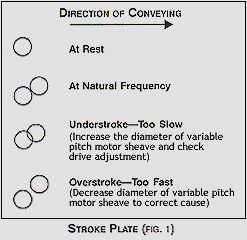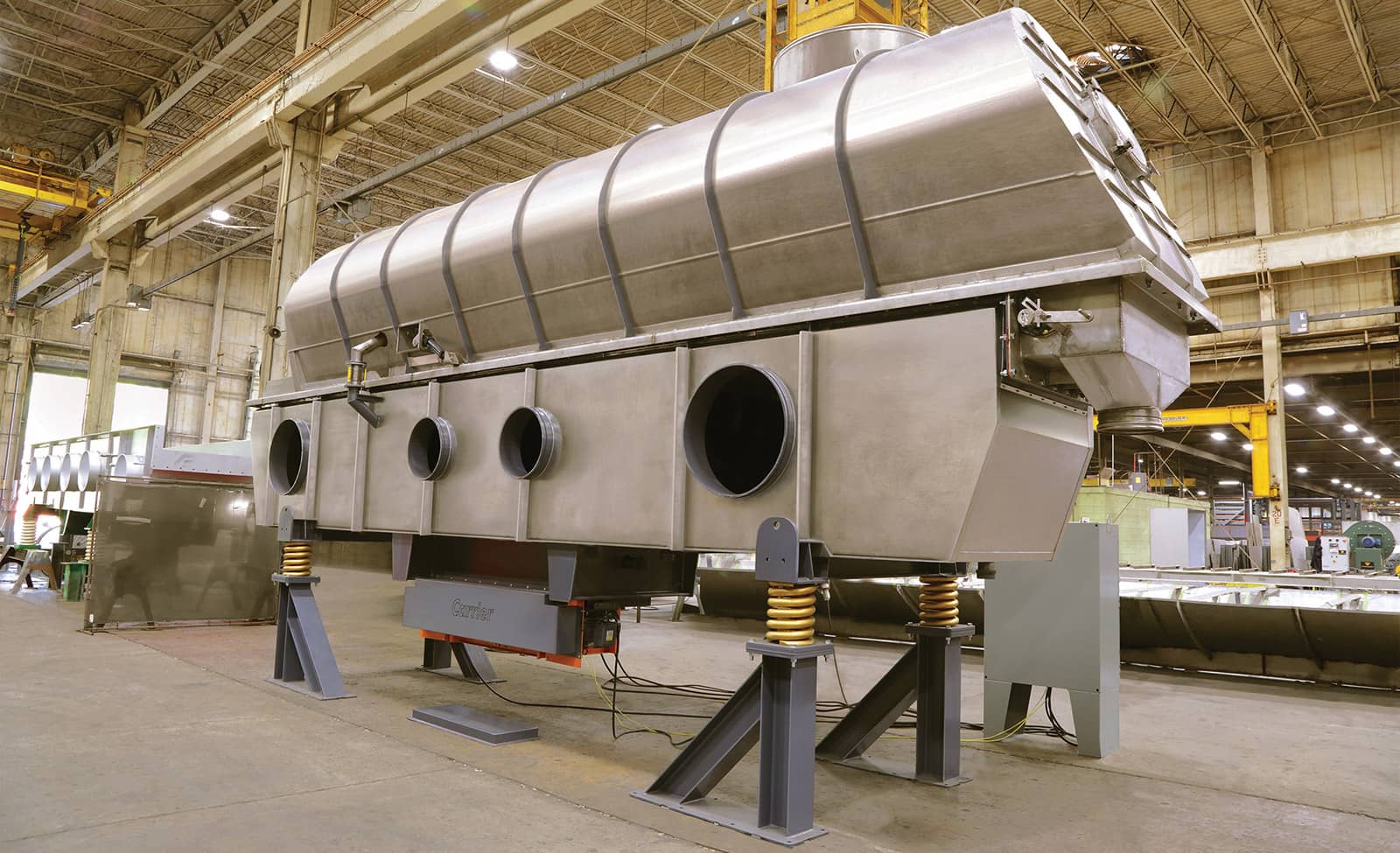What is the serial number of the unit?
The serial number of the unit can be found on the data tag in the drive area and it is also stamped in the end of the drive shaft opposite the driven sheave. Each piece of Carrier equipment is custom designed. The serial number is our identification number for parts lists, drawings, operational manuals, etc.
The serial number can be found on the lower right-hand corner of the final certified drawings located in your Installation & Operational Manual. A typical serial number will be a five-digit number, i.e. S/N 27111.
What is the unit’s stroke?
 Check the stroke by locating and reading the stroke plate. Refer to Fig. 1. The unit’s stroke should closely match the stroke listed in your Installation & Operational Manual.
Check the stroke by locating and reading the stroke plate. Refer to Fig. 1. The unit’s stroke should closely match the stroke listed in your Installation & Operational Manual.
The stroke plate is a decal or magnetic plate attached to the unit. The diameter of the circle represents the length of stroke. For example, a unit with a 3/16″ stroke would use a stroke plate with a 3/16″ diameter circle. With the unit in operation, two circles will appear when looking at the moving stroke plate. When the two circles are exactly tangent in the form of a figure 8, the unit is set to its proper natural frequency speed.
Click for a YouTube video on how to read a stroke plate.
If a stroke plate cannot be found on the unit or if it has been painted over and is no longer legible, a temporary stroke plate can be made by using a template to draw the appropriate size circle on a piece of paper or cardboard, which can then be taped or glued on the side of the vibrating member to be measured.
What is the unit’s angle of attack?
The angle of attack can be determined by reading the approximated angle of the two circles in motion, i.e. 45 deg. to 90 deg. The angle of attack affects the product conveying speed as well as drying and cooling. The correct angle of attack can be found on the final certified drawings. The procedure to achieve the correct drive-timing angle can be found in your Installation & Operational Manual.
What process problems are you experiencing?
Be prepared to give a brief summary of the problem before calling. The typical information requested during the troubleshooting process is as follows:
- Stroke and angle of attack.
- Product rate/ temperature.
- Process air temperature.
- Process air flow/ plenum pressure.
- Exhaust air flow/ hood pressure.
- When did problem start?
- Is plenum and drilled deck clean?







